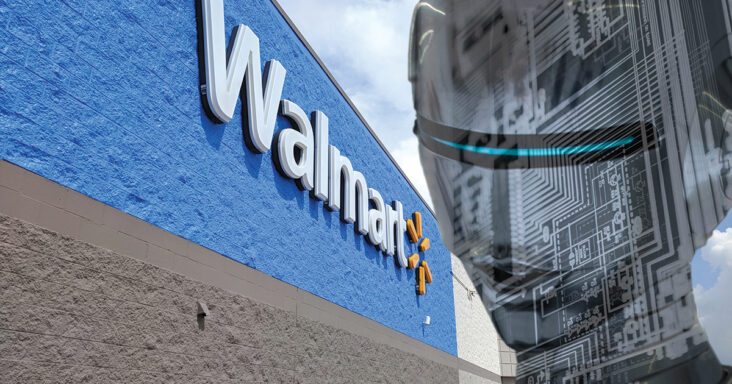Walmart expands generative AI to include a ‘Playground’ for employees
by June 13, 2023 10:36 am 3,809 views

Walmart said it’s been testing the potential uses of generative artificial intelligence (AI). During the retailer’s recent shareholders week, tech execs explained how Walmart is using generative AI across its business.
Cheryl Ainoa, vice president of new businesses and emerging technology at Walmart Global Tech, said Monday (June 12) the retailer is rolling out its GenAI Playground. The early-stage internal generative AI tool allows employees to explore and learn about the new technology. Generative AI is based on machine learning (ML) and can create new content and ideas, including conversations, stories, images, videos and music, she noted.
“A key benefit of the playground is that there will be various GenAI models available to try out all in one place … enabling our associates to see the difference in how each model reacts to the same prompts,” Ainoa said. “It’s just the latest example of how we’re moving fast to bring this disruptive technology into and across Walmart.”
She said the GenAI Playground will enable Walmart employees to explore generative AI capabilities without the risk of data leakage and exposure. She said the tool is primarily used for experimentation, and the results have not been validated as accurate. They should be validated before being internally shared or used to help make business decisions.
Donna Morris, chief people officer at Walmart, said the goal is to unlock the potential of employees and better serve customers.
“We have some exciting developments on the horizon, including GenAI capabilities built within our Me@Campus desktop and mobile app that will roll out later this summer. Me@Campus is a personalized experience that allows campus associates to manage their careers, financial well-being, associate profile, learning, teams, hiring, and so much more. As our discussions about how to make the best use of this technology in the People space have evolved, we think our early work has set the foundation for the following capabilities,” Morris noted in the blog post.
Three areas that Walmart hopes to explore generative AI include creating content for social media posts. Within company guidelines, employees are encouraged to test it and try different uses to see how the technology may improve the quality and efficiency of their work. Morris said employees will also be able use the technology to enhance their search to find answers about their employment. The database would have information such as employee benefits that employees could get answered accurately and quickly. The third use will be human resources self-service.
“We envision the opportunity to drive requests and changes that could include increasing the worker’s 401k contribution or updating their individual development plan. Integrated systems will make these timesaving, personalized services possible, removing the friction and time of processes,” Morris said.
Studies on GenAI’s impact in professional settings have already shown significant productivity increases and increased job satisfaction, she noted.
“This confirms our experience that when our associates are supported with good technology, we are able to create more rewarding and engaging jobs, get to solutions faster and use our humanity to make a difference. Yes, over time, we believe that the makeup of our workforce will evolve with technology – we’ll have a different combination of roles, but we’ll ultimately have a larger business overall and the same or more associates in our company,” Morris said.
Walmart also recently unveiled a GenAI tool named Ask Claude, named for the late-Claude Harris, the first buyer at Walmart in 1962. The tool is for buyer teams to help them improve efficiency and get help with mundane research, which is needed for them to do their job.
Anshu Bhardwaj, senior vice president at Walmart’s global tech division, said the GenAI tool can help buyers automate repetitive tasks, conduct research to find a resolution or search as an expert on merchandising fundamentals. She said Ask Claude could run the weekly business review reports, which are required. For example, the tool can provide reasons for sales changes because of promotions, out-of-stocks or customer preferences.
The GenAI tool can also predict demand for certain items because of external factors like weather or customer behaviors. The tool can also provide recommendations to help the buyer team mitigate any losses and push sales higher.
She said Walmart’s use of GenAI is possible because the tech teams have built out a base technology platform on which the applications like Ask Claude or Me@Campus will run. She likened the base platform known as Converse to a Lego base upon which many other blocks are added to create entirely different outcomes.
GenAI is also being used in Walmart’s supply chain division, according to Walmart Chief Financial Officer John Rainey. He said Walmart is reengineering its supply chain to develop a more intelligent and connected omnichannel fulfillment network that will feature greater use of data, intelligent software and automation. The retailer expects the outcome to improve in-stock levels, inventory accuracy and flow across all fulfillment channels.
The retail giant is also using GenAI to help online shoppers. Bhardwaj said Walmart.com’s search feature is powered by GenAI. She said the smarter search capabilities help shoppers more quickly find products. Last-mile delivery workers are also using the technology for more efficient routing.
